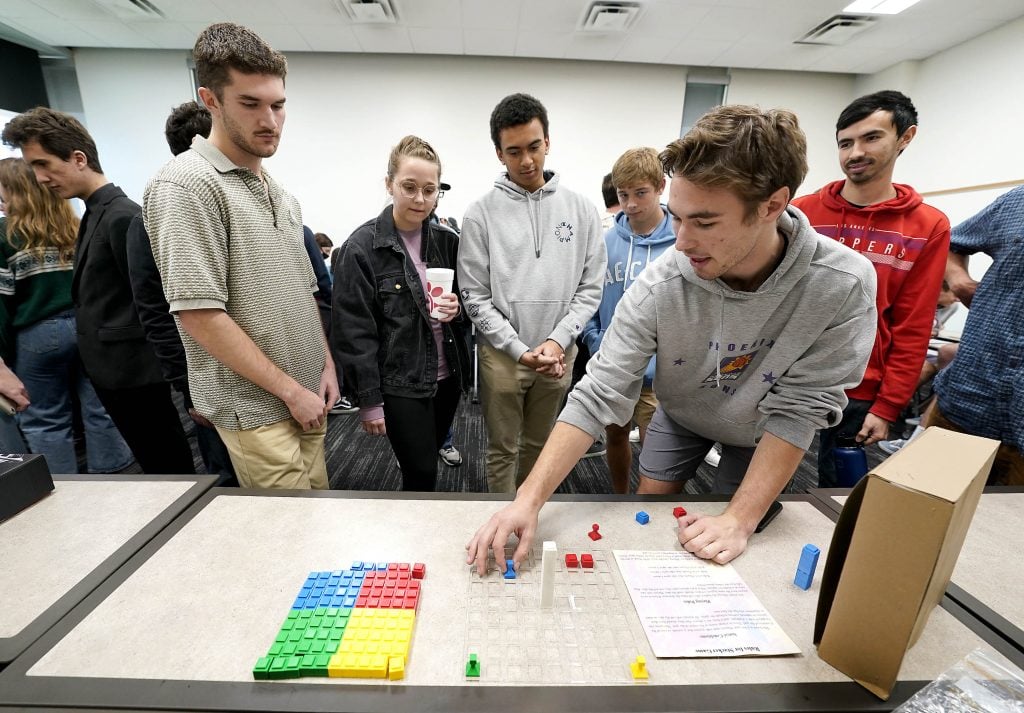
Photos by Ralph Freso / Slideshow
You’re a fairy living your best life with your fairy friends. But something isn’t quite right. Tinker Bell would agree.
One of the fairies is acting suspicious, and considering all the stories going around about trolls trying to blend in and impersonate fairies, your suspicions might be right.
That’s the backstory behind A Fairy Tale: Fairies vs. Trolls. It was one of more than two dozen board game prototypes that sophomore-level Grand Canyon University College of Science, Engineering and Technology students rolled out Monday in Dr. Jeff La Belle’s and Craig Price's Engineering Design and Prototyping classes, also known less romantically as ESG-220.
Mechanical/aerospace engineering major Nya Walker and her team hustled this weekend in the melee of crunch time to finish their fairies vs. trolls fantasy/mystery game and present it in class to their fellow game designers.
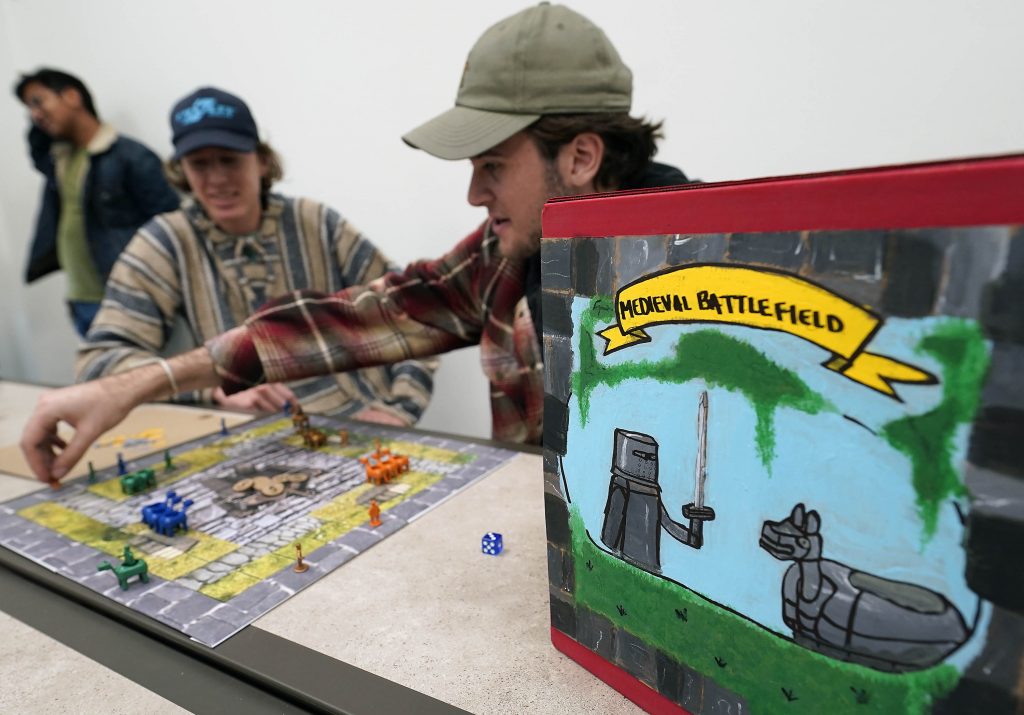
Game on.
“I really, really enjoy board games, but building one — the whole game play design and everything — was a little different. I was like, ‘That’s a BIG ask.’ It’s easier to have an idea than actually execute the idea,” Walker said of taking concepts out of their head and making them come to fruition on a game board. “But it was a lot of fun actually making it happen.”
I really, really enjoy board games, but building one -- the whole game play design and everything -- was a little different. I was like, 'That's a BIG ask.' ... But it was a lot of fun actually making it happen."
Nya Walker, mechanical/aerospace engineering sophomore and ESG-220 student
Making it happen meant getting together, in person, a lot, and playing the game over and over to reach the final result — a fully realized prototype.
Walker surprised even herself with what she and her team created.
“Everything is completely crafted by us. We did the laser printing for both the bridges. We did the 3D printing and used resin for the game pieces. Everything else was hand-cut, and it was a lot of Xacto knifing things to fit.”
When it comes to crafting things to fit, a board gaming class doesn’t really seem to jibe in the engineering world of calculus, differential equations, and fluid and solid mechanics.
La Belle would take issue with that.
In his playbook, putting away childish things sometimes also means putting away imagination, creativity and playing nicely with others.
The biomedical engineering professor first introduced a board game class when he taught at another university and wanted to bring it to GCU. So he rolled the dice and introduced the course this semester.
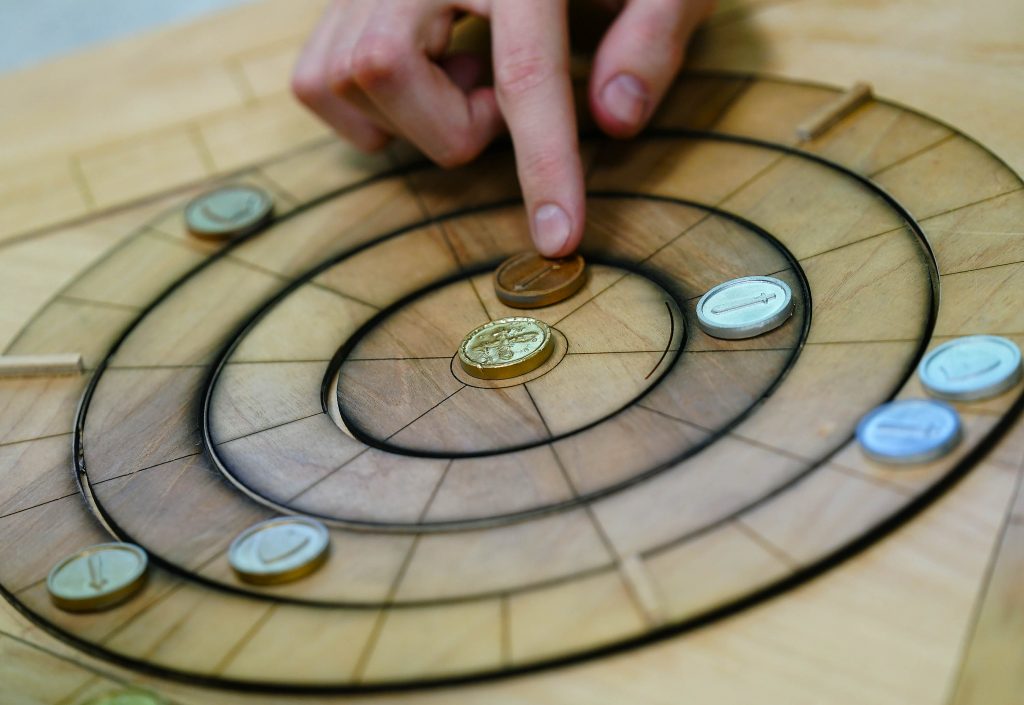
The class, of course, isn’t really about board games.
It’s about taking an idea for a product, building a prototype and presenting that prototype before bringing it to market — something La Belle knows a little something about.
Not only does he helm medical device designs in his namesake lab, La Belle Labs, but the game enthusiast owns his own board company, TableTop BoardGames, has backed more than 200 games on Kickstarter and has helped other avid gamers launch their own products.
The hands-on innovation and product design/prototyping class “gets them ready for industry,” La Belle said.
What it also does, Price added, who taught the afternoon ESG-220 class this semester, is prepare students for the capstone process. Students must come up with a final project meant to showcase what they’ve learned over their academic career at GCU, build a prototype of that project and present it, usually at the end of their senior year.
“It gets them thinking through the design process, gives them experience working on a prototype and gives them experience working with lab equipment,” Price said.
Not that the process is always simple, neat or just so. Students will make mistakes. It’s all part of the learning process.

“I’m OK with them making mistakes,” La Belle said.
And students made plenty of them.
“I think it has taught me a lot about how the stages never go exactly how you want them,” said mechanical engineering major Casy Noel, who presented his team’s board game. [Redacted] (yes, that's its name) is about time travelers who try to prevent the explosion of the Challenger Space Shuttle even though others are trying to plot those time travelers’ demise. “The biggest takeaway, I’d say, is just about planning for changes, because the original idea we had is quite different from what we ended up with.
“The best thing you can learn? Stay on your toes.”
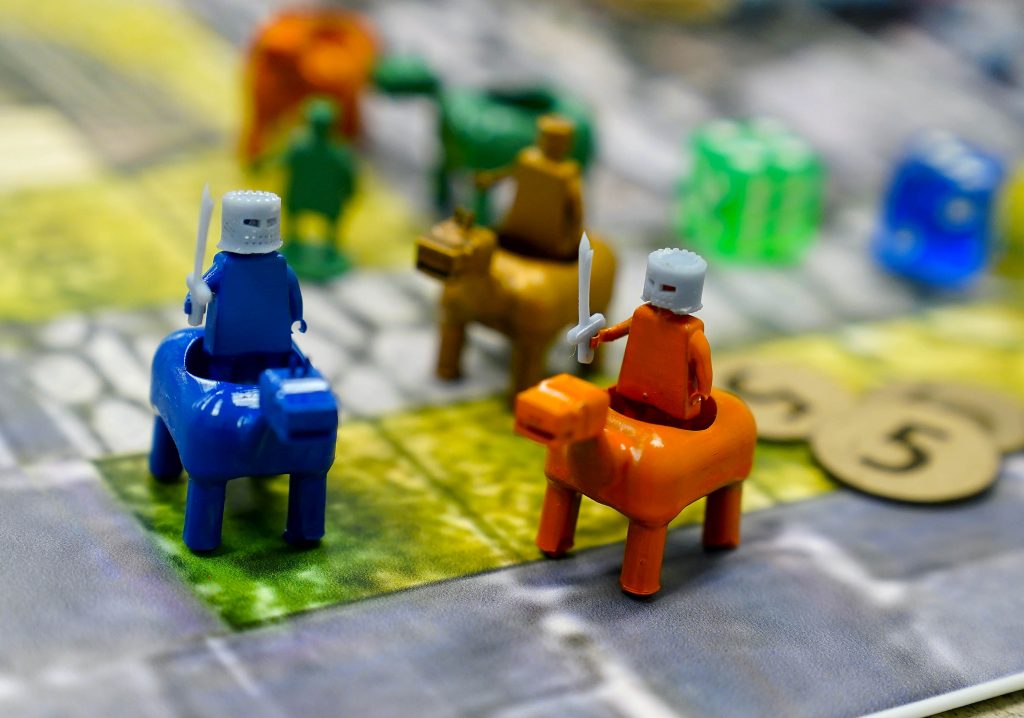
Biomedical engineering major Samantha Reyes agreed. For her team, time — and team — management was the big challenge.
“It was definitely hard to manage everyone’s schedules and to get in here (get to the lab). A lot of it is hands-on, so we have to be here to be able to do the design, all the artwork, so definitely learning how to communicate with each other and how to split up work.”
Her team’s board game, Sacred Nightmare, takes treasure-seeking players to medieval times, rife with goblins and dragons. A note that players find explains their amnesia and the predicament they’re in as they fight to survive.
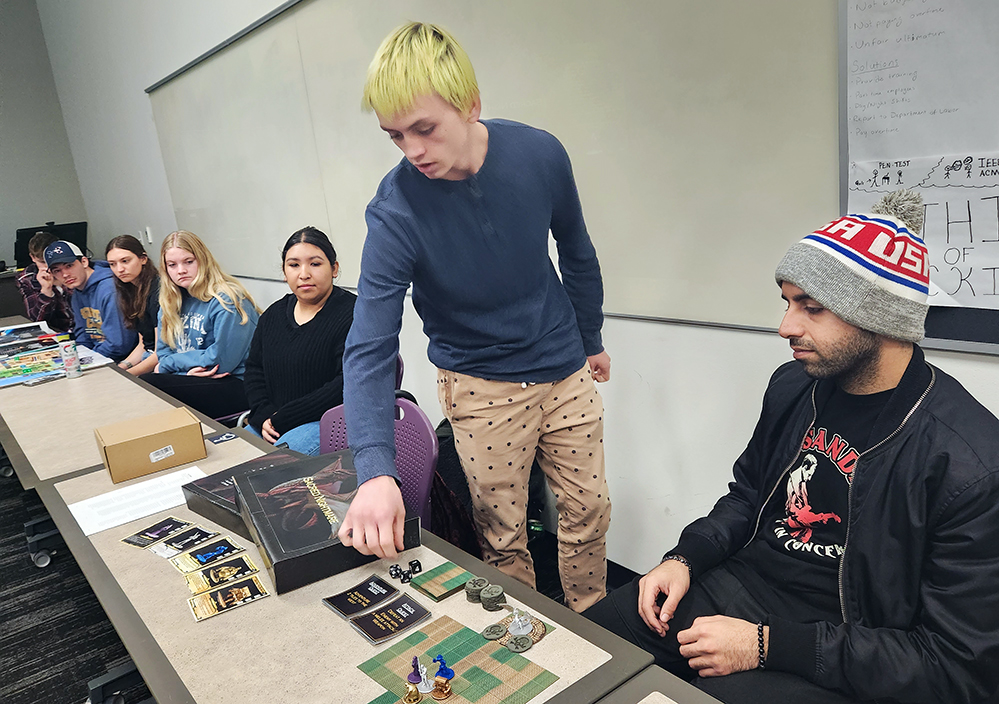
Team member Quinton Hemstreet, who grew up playing fantasy tabletop role-playing game Dungeons & Dragons, said one challenge for the team was overcoming laptop limitations: “We definitely needed a more powerful laptop. It was 10 minutes loading, then crash, 10 minutes loading, then CRASH.”
Supe City game creator Ashlyn Glaser, a mechanical engineering major, has played a slew of board games. “My boyfriend’s family is really into playing board games. They have, like, 100.”
Creating the prototype for her team’s game involved a lot of trial and error, she said, especially when it came to making the 3D-printed pieces.
But the process also was a lot of fun. As La Belle said, students experienced “intrinsic motivation” to get to class. Who wouldn’t want to go to class to play board games?
“It has kind of tricked them to be in the classroom, and me, too,” he said with a smile.
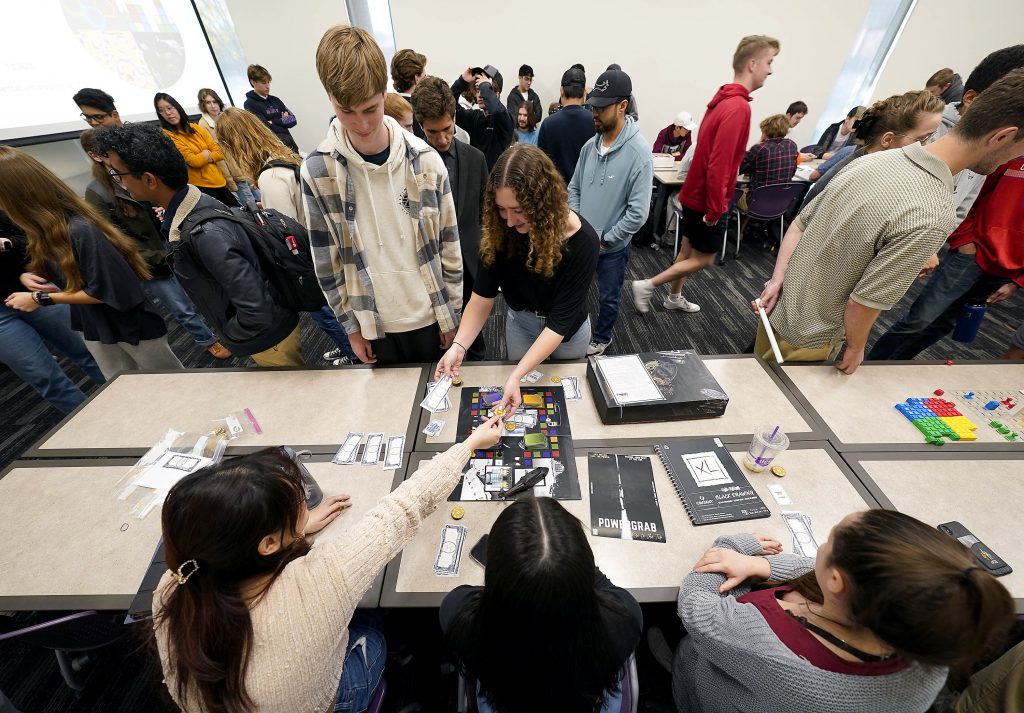
Robotics engineering major Joel Bados said what made the process cool was researching other board games for inspiration in making their own — in this case, a game in which superheroes and villains try to take over the most territories. One of the assignments was to compare their game to five others that already exist.
Coming up with a unique game, Bados said, was hard, but testing the game and playing it with teammates was part of the fun that goes with all the challenges.
Bados said innovation, creativity, making your own product from scratch and working with a team were just some of the things he learned. “All of our minds and all of our ideas came together to make one big, awesome product. All of this game has pieces of all of our ideas.”
“They stepped up,” La Belle said of the students. “We talk about being hands-on, and this is all them: the good things, the bad things. It’s all about learning. They made failures, they learned from them. They’re resilient.”
Game on.
GCU senior writer Lana Sweeten-Shults can be reached at [email protected] or at 602-639-7901.
****
Related content:















